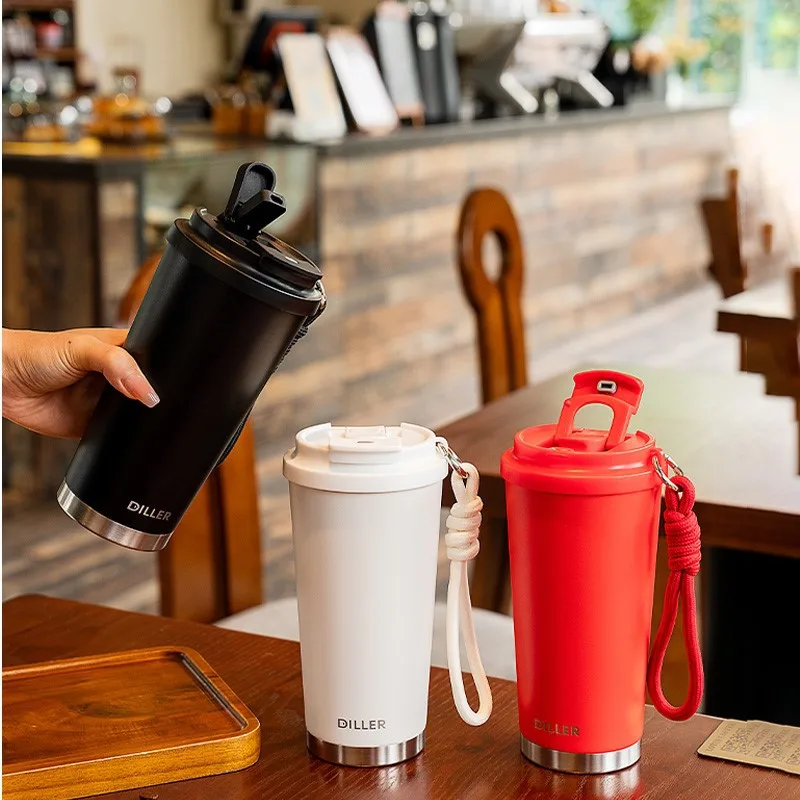단열 컵은 어떻게 작동하나요?
단열 물병은 특히 추운 겨울날에 음료를 따뜻하게 유지하고 편안함을 제공함으로써 우리의 일상 생활에서 중요한 역할을 합니다. 단열 물병의 작동 원리는 그리 복잡하지 않지만, 디자인과 소재 선택은 신중하게 고려해야 합니다. 이 글에서는 단열 물병의 작동 원리, 역사적 발전, 구조적 디자인, 소재 선택, 사용 팁에 대한 자세한 설명을 제공합니다.
작동 원리 단열수통
단열 물병의 핵심 기능은 내부 액체의 온도를 유지하는 것이며, 이는 주로 열 전달을 최소화하여 달성됩니다. 열 전달에는 전도, 대류, 복사의 세 가지 주요 모드가 있습니다. 단열 물병은 다음 방법을 통해 이 세 가지 유형의 열 전달을 줄입니다.
1. 이중 층 진공 단열: 단열 물병은 내부와 외부 벽 사이에 진공 층이 있습니다. 진공은 공기 분자를 거의 포함하지 않기 때문에 우수한 단열재로, 대류와 전도를 통한 열 전달을 방지합니다. 이것은 단열 물병에 가장 중요한 단열 방법입니다.
2. 내벽 코팅: 열 복사를 줄이기 위해 단열 물병의 내벽은 일반적으로 은이나 구리 층으로 코팅됩니다. 이러한 금속은 반사율이 높고 대부분의 적외선 복사를 반사하여 복사를 통한 열 손실을 줄일 수 있습니다.
3. 밀폐형 뚜껑 디자인: 단열 물병의 뚜껑은 일반적으로 기밀로 설계되어 개구부에서 대류로 인한 열 손실을 방지합니다. 뚜껑의 소재와 디자인도 열 전도를 최소화하는 데 도움이 됩니다.
역사적 발전 단열수통
단열 물병의 역사는 19세기 후반으로 거슬러 올라갑니다. 1892년, 영국의 과학자 제임스 듀어는 현대 단열 물병의 전신인 듀어 플라스크(진공 플라스크라고도 함)를 발명했습니다. 듀어의 발명품은 원래 실험에서 저온 액체를 보존하기 위한 것이었습니다. 그는 진공이 있는 이중층 유리 병을 사용하여 외부 열을 효과적으로 차단했습니다.
20세기 초, 독일의 물리학자 라인홀트 버거(Reinhold Burger)는 듀어의 디자인을 더욱 개량하여 1904년에 특허를 취득했습니다. 그는 유리 외부를 금속 껍질로 바꾸고 껍질과 내부 병 사이에 보호 층을 추가했습니다. 이는 플라스크의 강도를 강화할 뿐만 아니라 단열 성능도 개선했습니다. 시간이 지남에 따라 단열 물병의 디자인과 소재는 지속적으로 개선되어 일상 생활에서 단열에 없어서는 안 될 도구가 되었습니다.
구조 설계 단열수통
현대 단열 물병의 구조적 설계는 주로 다음과 같은 부분으로 구성됩니다.
1. 내부 탱크: 단열 물병의 내부 탱크는 일반적으로 내식성, 위생성, 고온 및 저온을 견딜 수 있는 능력으로 인해 스테인리스 스틸로 만들어집니다. 내부 탱크의 표면은 일반적으로 열 복사를 줄이기 위해 연마됩니다.
2. 외부 셸: 외부 셸은 또한 스테인리스 스틸 또는 플라스틱으로 만들어져 내부 탱크를 보호하고 편안한 그립을 제공합니다. 외부 셸의 디자인은 또한 미학과 휴대성을 고려합니다.
3. 진공 층: 내부 탱크와 외부 셸 사이의 진공 층은 단열 물병의 단열에 대한 핵심입니다. 제조 과정에서 진공 수준이 요구 사항을 충족하는지 확인하기 위해 고급 진공 기술이 필요합니다.
4. 밀봉된 뚜껑: 밀봉된 뚜껑의 디자인과 재료 선택은 단열 물병의 단열 성능에 직접적인 영향을 미칩니다. 일반적인 뚜껑 재료에는 플라스틱과 실리콘이 있으며, 이는 밀봉 특성과 내열성이 좋습니다.
5. 기타 액세서리: 일부 고급 단열 물병에는 다양한 사용자 요구를 충족하기 위한 필터 및 차 분리기 등의 추가 액세서리가 함께 제공됩니다.
재료 선택
단열 물병의 재료 선택은 성능과 수명에 직접적인 영향을 미칩니다. 다음은 일반적으로 사용되는 재료와 그 특성입니다.
1. 스테인리스 스틸: 스테인리스 스틸은 단열 물병의 내부 탱크와 외부 셸을 만드는 주요 소재입니다. 일반적인 스테인리스 스틸 등급은 304와 316L로, 내식성, 강도, 위생성이 뛰어납니다.
2. 플라스틱: 플라스틱은 주로 단열수병의 외피와 밀봉된 뚜껑을 만드는 데 사용됩니다. 일반적인 플라스틱 종류로는 내열성과 내충격성이 좋은 폴리프로필렌(PP)과 폴리카보네이트(PC)가 있습니다.
3. 실리콘: 실리콘은 주로 밀봉 링과 밀봉된 뚜껑을 만드는 데 사용되며, 우수한 유연성과 내열성을 제공하여 단열 물병을 효과적으로 밀봉하고 열 손실을 방지합니다.
4. 유리: 일부 고급 단열 물병은 내부 탱크에 유리를 사용합니다. 유리는 화학적 안정성이 뛰어나고 음료와 반응하지 않아 음료의 순수함과 건강을 보장합니다.
사용 팁 단열수통
단열 물병의 수명을 연장하고 단열 성능을 보장하려면 다음 팁을 고려하세요.
1. 예열 또는 예냉: 단열 물병을 사용하기 전에 따뜻한 물이나 차가운 물로 예열하거나 예냉하여 단열 성능을 강화하세요.
2. 과충전을 피하세요: 플라스크를 채울 때, 가득 채우지 마세요. 유출을 방지하고 단열을 돕기 위해 약간의 공간을 남겨두세요.
3. 정기적인 세척: 단열 물병, 특히 내부 탱크와 밀봉된 뚜껑을 정기적으로 세척하여 박테리아 증식과 악취를 방지합니다. 세척에는 따뜻한 물과 순한 세제를 사용하고, 강산이나 알칼리는 피하십시오.
4. 강한 충격 피하기: 스테인리스 스틸 단열 물병은 튼튼하지만 강한 충격은 여전히 내부 탱크와 진공층을 손상시켜 단열에 영향을 미칠 수 있습니다. 강한 충격을 피하기 위해 조심스럽게 다루십시오.
5. 탄산 음료를 보관하지 마십시오. 단열 물병은 탄산 음료에 적합하지 않습니다. 밀폐된 환경에서 압력이 증가하면 플라스크가 터지거나 뚜껑이 튀어나올 수 있기 때문입니다.
단열 물병은 특히 이중층 진공 단열, 내부 벽 코팅 및 밀폐형 뚜껑 디자인을 통해 열 전달을 줄여 음료 온도를 효과적으로 유지합니다. 기술의 지속적인 발전으로 단열 물병의 재료와 디자인은 지속적으로 개선되어 단열 성능과 사용자 편의성이 향상되고 있습니다. 단열 물병의 작동 원리와 사용 팁을 이해하면 이 편리한 도구를 더 잘 활용하여 삶에 더 많은 편안함과 편의성을 더할 수 있습니다.


